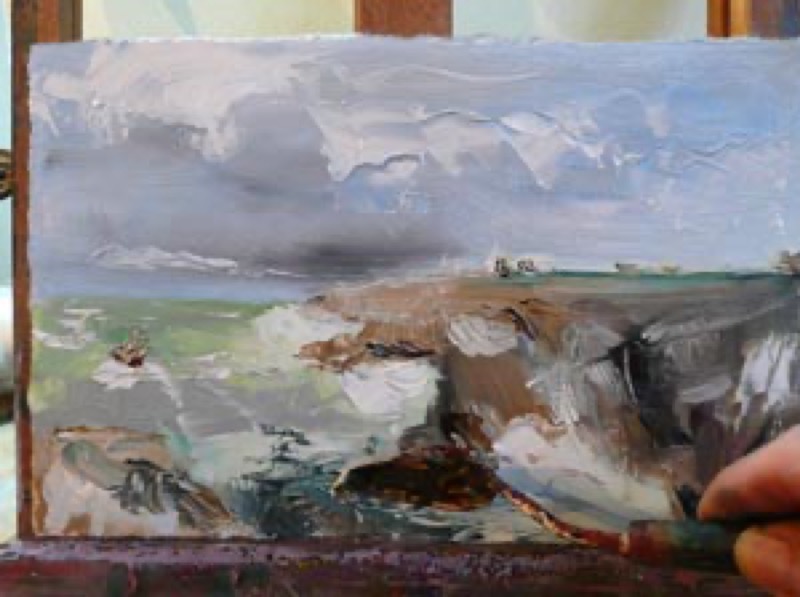A significant advantage of painting with oils: your mistakes are usually easy to fix!
What you need to know
Because oil paint takes particularly long to dry, you can work, rework and fix your painting as needed, until you have the perfect finished product. And even when the paint is fully dry, not all is lost…

1. Touching up wet paint
Scraping an impasto: an overly prominent impasto has your work out of kilter…
- If the paint is still quite fresh, use a palette knife to remove the excess
- If the paint is practically dry, use a razor blade to remove the paint gradually.
Removing an item from a composition: you realize that the silhouette you just put on the left would actually look better on the right…
- Use a palette knife to scrape the paint in the spot where the item is located.
- Erase the remaining traces with a rag moistened with white spirit or turpentine.
Removing a whole coat of paint: your layer of paint has too much paint to do anymore work on it.
- Remove the layer of fresh layer of paint with some absorbent paper.
- Remove any remaining traces with a rag moistened with white spirit.

2. Touching up dry paint
Touching up a dry area where paint has been applied thinly: you may, upon reflection, want to move the figure on the right to the center but, since the paint is dry…
- That's easy: just paint over that area!
Touching up a dry area where paint has been applied thickly: there's no way you can paint over that area without having the relief show…
- Use fine sandpaper to gently scrape the area to be fixed.
Recommended product:
Graduate Oil and Acrylic
